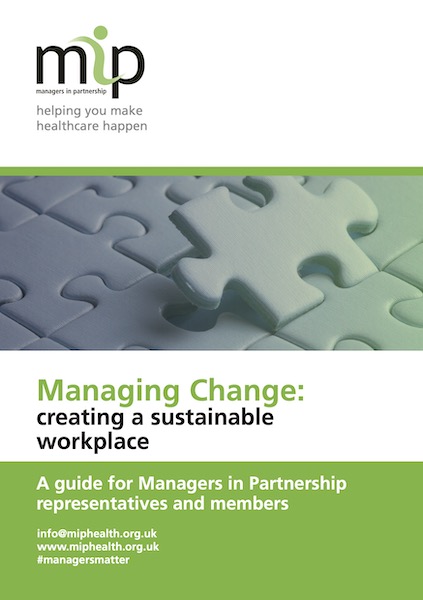Creating a sustainable workplace: MiP’s guide to managing change

This short guide focuses on how MiP and its members can contribute to ensuring change management is done well. MiP believes well managed change can be empowering. But at the heart of successful change management is the ability to carry the workforce. Whatever the drivers of change, this is essential.
The guide includes:
- an introduction to models of change management, principles of good practice and an overview of common problems
- references to relevant initiatives across the four nations of the UK
- practical advice on what MiP members – as individuals, managers, and representatives – can do to ensure change is carried out effetively, fairly, and in a open and consultative way
We hope that you will use this guide to have both structured and informal discussions in your workplace about improving change management and making the NHS a sustainable place to work. If you’re interested in getting involved in MiP’s work on organisational change in your workplace, please contact your national officer.
This is the last of three guides published this year for MiP members as managers, representatives, and individuals. Our guide to organisational culture was published in April, and a guide to managing equality and diversity was launched at the MiP Summit on 9 November.
Download your copy of the managing change guide here.
Related News
-

MiP responds to the abolition of NHS England
Government risk repeating same mistakes as Lansley by abolishing NHS England and cutting more staff from ICBs, says MiP.
-

NHS England and central staff could be cut by 50%, NHSE has announced
Government planned cuts at NHS England go much further than previously announced, with up to 50% of staff at risk.
-

New MiP survey shows growing support for principle of regulating managers, but warns it won’t improve patient safety
MiP’s member survey on regulating NHS managers shows managers are still not convinced regulation will improve patient safety or raise standards, despite growing support for it in principle.